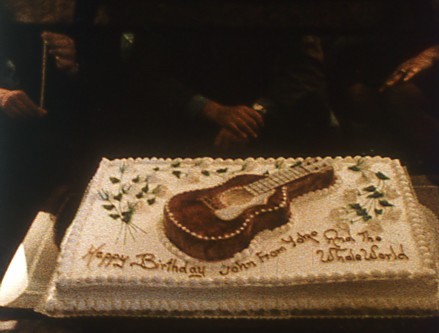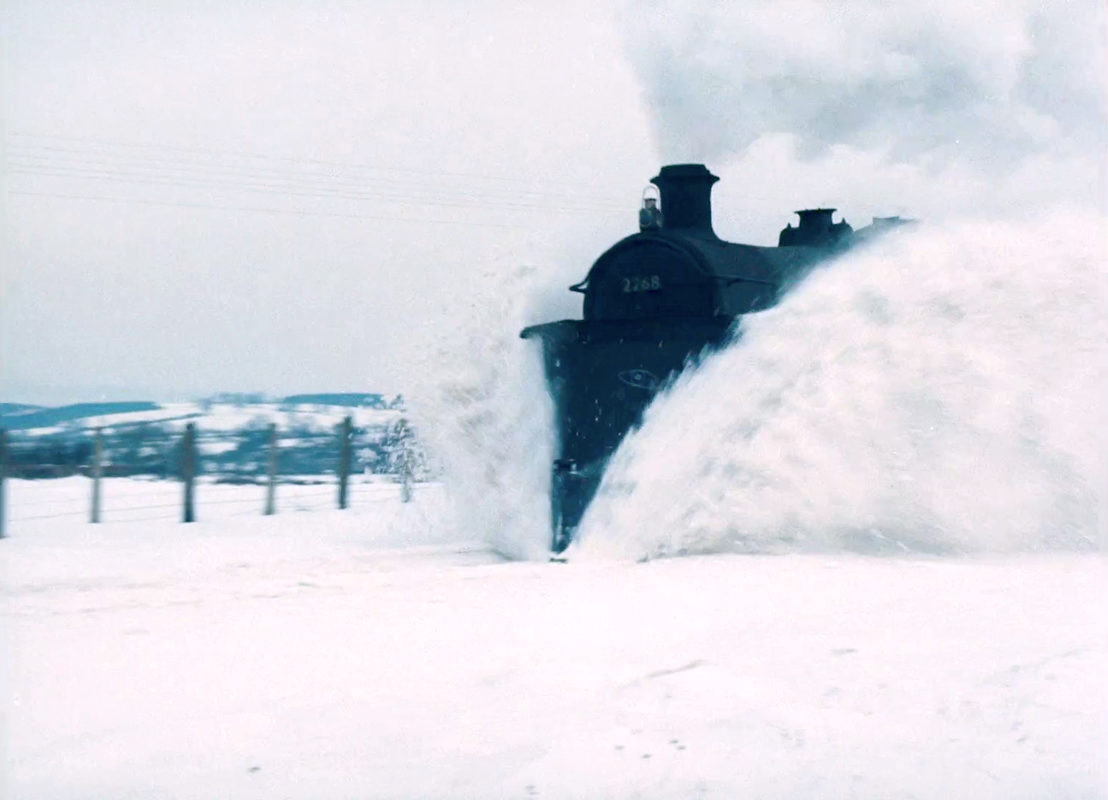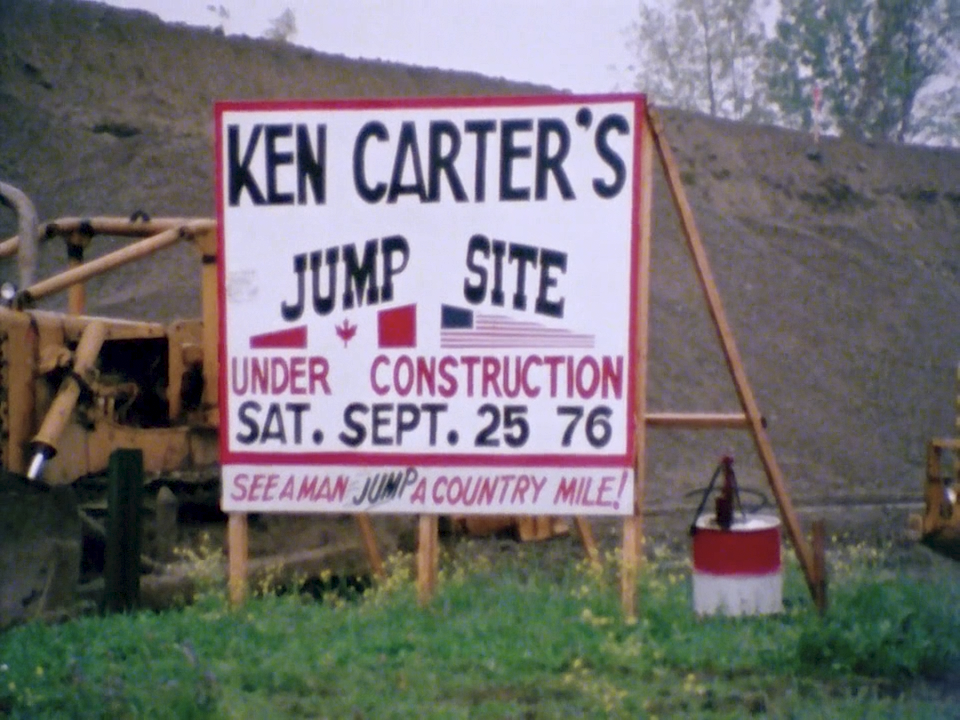we are not what we seemThe White Rose [The White Rose: Jay DeFeo’s Painting Removed by Angelic Hosts] (Bruce Conner, 1967)
Nov
9
1965

Workmen during the dismantling of The Rose in Jay DeFeo's studio on Fillmore Street, San Francisco on November 9, 1965. Screenshot taken from a clip made available by the Paula Cooper Gallery on Vimeo. DP: Bruce Conner..
– words inscribed in the bottom of DeFeo's painter's stool
documentary
“My whole idea behind this in the first place was to see how dumb America was. How dumb the world is.”Psychic Confession (Danny Korem, 1982)
Oct
23

James Hydrick spins a one dollar bill – balanced on top of a pin, locked into an airtight, glass box – with the power of his own mind.
– James Hydrick
La sixième face du pentagone [The Sixth Face of the Pentagon] (Chris Marker + François Reichenbach, 1968)
Oct
21
1967

Armed police seen from the back. In front of him someone holds up a sign that reads WHY WAR. DPs: Tony Daval, Chris Marker & Christian Odasso.
“Mr. Everyman explains how to look like a Japanese and thus impress those wild and not very civilized people. Mrs. Everyman replies that for savages, they look remarkably civilized. Meanwhile, Mr. Everyman, seeing more people looking even more Japanese, is reassured. Mrs. Everyman sees soldiers parading in European uniform. She smiles ironically. But now a number of typical Japanese walk into the house. Her irony disappears. And Mr. Everyman is not ashamed to admit… he is mystified.”Le mystère Koumiko [不思議なクミコ / The Koumiko Mystery] (Chris Marker, 1965)
Oct
11
1964

The film covers multiple days. Koumiko thinks on October 17. DP: Chris Marker.
– narrator
Happy Birthday to John [Happy Birthday John Lennon] (Jonas Mekas, 1995)
Oct
9
1972

A rectangular birthday cake with a chocolate acoustic guitar spells out Happy Birthday John From Yoko And The Whole World. Presumed DP: Jonas Mekas.
On October 9th, 1972 an exhibition of John and Yoko's art – designed by the Master of the Fluxus movement, George Maciunas and curated by David Ross – opened at the Syracuse Museum of Art in New York. On the same day, an unusual group of John and Yoko's friends, including Ringo Starr, Allen Ginsberg, and Paul Krasner, gathered to celebrate John's birthday.
“Thank you for your card and your ice-cream, I love you very much!”Grey Gardens (Albert + David Maysles, Ellen Hovde + Muffie Meyer, 1975)
Oct
5
1973

Washed out felt-tip penned well-wishes read: OCTOBER 5th – 1973 “GREY GARDENS” AT 78 IT IS TRUE – YOU CAN LIVE TO BE 80 TOO. DPs: Albert & David Maysles.
– Edith 'Big Edie' Bouvier Beale, saying goodbye to her birthday party guests
Calle Santa Fe (Carmen Castillo, 2007)
Oct
5

Miguel Enriquez holding Carmen Castillo in a family snapshot. DPs: Ned Burgess, Sebastián Moreno, Raphaël O'Byrne & Arnaldo Rodríguez.
“Let's face it; the future as a Rolling Stone is very uncertain.”Charlie Is My Darling [Rolling With The Stones] (Peter Whitehead, 1966)
Sep
28
Ben E. King – 1938

Charlie sheepishly smells a carnation (via), Brian can be seen in the background. DP: Peter Whitehead.
Soul or rhythm and blues for Ben E. King's birthday.
– Brian Jones
While then-manager Oldham's dream of an all-Stones A Clockwork Orange never manifested, there was an attempt to counter The Beatles' A Hard Day's Night (1964). That too, failed. Instead, Charlie became a cinéma vérité roadmovie of the Stones' touring Ireland in 1965. Whitehead's camera is there for Charlie.
Snow (Geoffrey Jones, 1963)
Sep
27
Stockton and Darlington Railway – 1825

A steam locomotive ploughing through the snow using her cowcatcher. DP: Wolfgang Suschitzky.
A steam locomotive to celebrate the opening of the Stockton and Darlington Railway in 1825, the world's first public railway to use steam locomotives.
The Big Freeze of 1963 was one of the coldest winters recorded in British history. It was during this winter that filmmaker Geoffrey Jones was commissioned by British Transport Films to make a documentary about the British Railways Board. With the freeze setting in, Jones ran the footage in preparation of post-production, and was struck by the blackness of the locomotives against the white of the many feet of snow. This smaller experimental project became Snow. Accompanied by a stretched out version of the jazz tune Teen Beat, and BBC Radiophonic Workshop's own Daphne Oram, Snow is an improbable hypnotic trip in an impossible landscape.
The Devil at Your Heels (Robert Fortier, 1981)
Sep
25
1976

The location of the jump site, marked with a hand painted billboard: KEN CARTER'S JUMP SITE UNDER CONSTRUCTION SAT. SEPT. 25 76 SEE A MAN JUMP A COUNTRY MILE! DP: Barry Perles.